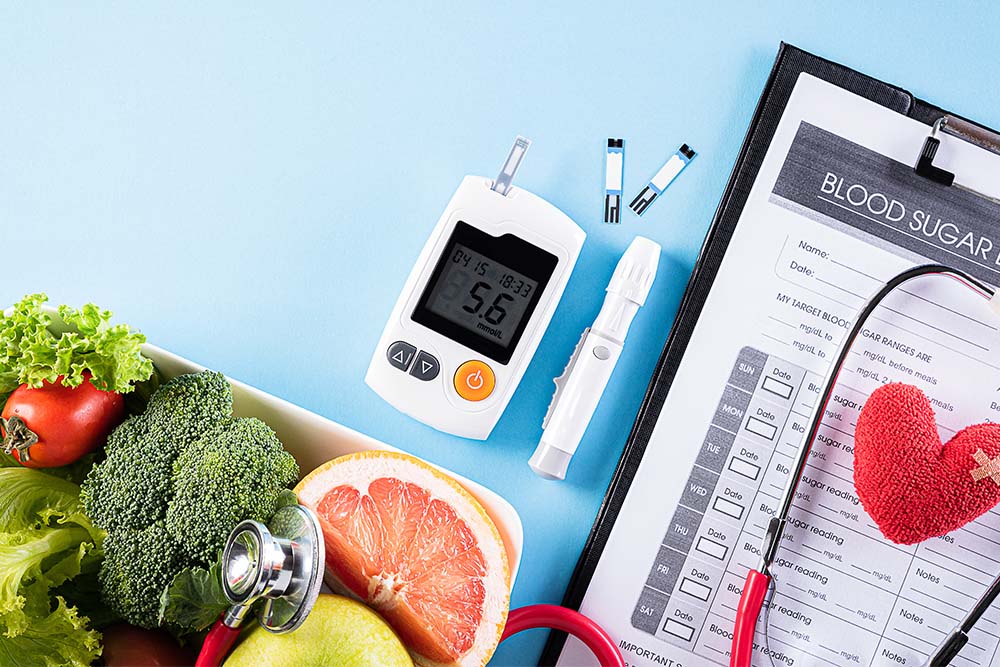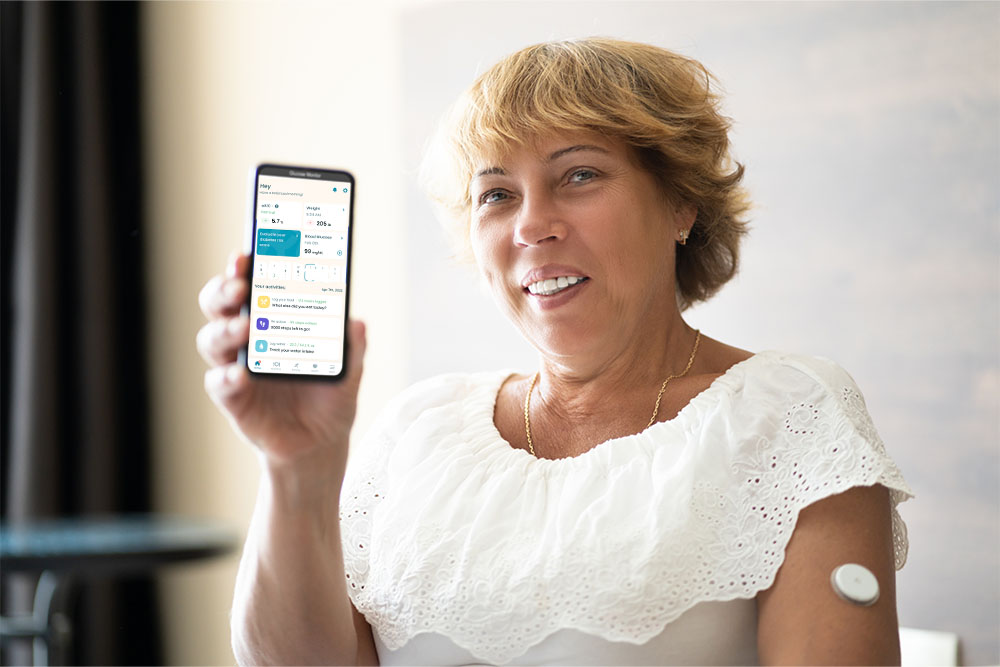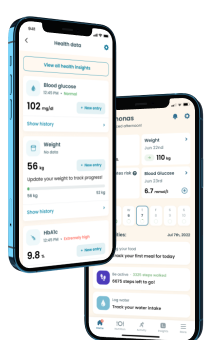Everything You Need to Know About Blood Sugar Levels

The Link Between Diabetes and Blood Sugar
Whenever you eat foods that contain carbohydrates, your body converts those carbohydrates into sugars. It then releases that sugar into your blood, where it travels toward the cells that need it. At the same time, your pancreas releases insulin, which your body uses to process the sugar so your cells can use it.
At least, that’s the process for people without diabetes. Someone with diabetes will experience issues with their blood sugar level because of two possible reasons. Either their pancreases have issues producing the insulin needed to process blood glucose, or their cells develop an insulin resistance that makes the process less efficient. It’s in these situations that blood glucose monitoring becomes important. People with diabetes must practice blood sugar control to ensure they manage blood sugar and avoid diabetes-related complications.
More information can be found by visiting the website of the American Diabetes Association. You’ll see information about test strip reading, blood pressure, blood vessels, glucose tablets, and general diabetes health care. Another resource for learning about the disease is a certified diabetes educator. These specialists can tell you more about how many hours after a meal you need to wait before testing your sugar levels, for example, and much more.
What happens if you have high blood sugar?
High blood sugar can occur for several reasons. Beyond eating too much sugary food, your sugar level could increase if you become less physically active, feel stressed, or miss a dose of your diabetes medicine. It can also occur due to gestational diabetes, which is when your blood glucose levels increase during pregnancy, only to fall again upon giving birth.
High blood glucose levels lead to several common symptoms:
- Feelings of fatigue
- Blurred vision
- Feeling extremely thirsty
- Going to the toilet more often
- Weight loss
If you experience any of these symptoms, take them as signals that you have high blood glucose and need to improve your blood sugar monitoring.
When your blood sugar rises, leading to consistently elevated levels, you place yourself at risk of developing several dangerous conditions, including:
- Diabetic retinopathy, which causes permanent damage to your eyesight
- Peripheral neuropathy, which is a form of nerve damage that causes pain primarily in the hands and feet
- A life-threatening condition, such as:
- Diabetic ketoacidosis
- Kidney disease
- Heart disease
In short, having too much blood glucose makes it harder for your body to produce enough insulin to process the sugar. The result can be a range of health conditions that impact your quality of life.
What happens if you have low blood sugar?
Low blood glucose levels can be just as dangerous as high ones. Generally speaking, this issue affects people with diabetes who take insulin and is often traceable to dietary issues. The early symptoms of low blood sugar include:
- Fatigue
- Feelings of hunger
- Dizziness
- Heart palpitations
- Sweating
- Tingling lips
- Mood swings
- Turning pale
If you don’t do anything about your low blood glucose level, your symptoms may intensify or give way to more damaging issues, such as:
- Blurred vision
- Physical weakness
- Clumsiness and slurred speech
- Difficulty concentrating
- Exhaustion
- Collapsing
- Seizures and fits
How Blood Sugar Helps Doctors Determine if You Have Diabetes

With the issues related to varying blood glucose being so severe, it’s easy to see why continuous glucose monitoring is so important. If you suspect that you have diabetes, your healthcare professional may administer several diabetes tests. Each test measures your blood glucose levels and compares them to healthy norms, helping your health care professional diagnose diabetes. You may undergo some or all of the following tests during your doctor’s visit.
Glycated hemoglobin test
Also known as an A1C blood test, this process shows your average blood sugar level for two or three months while you maintain your normal diet. Having an A1C level of 6.5% or higher on two of these tests means you have diabetes. Levels between 5.7% and 6.4% suggest prediabetes, with anything below 5.7% falling into the normal range.
Fasting blood sugar test
You’re asked to fast for the entire night before this blood test, after which your doctor will take a blood sample.
If you have a fasting blood sugar level of 126 milligrams per deciliter (mg/dl) or higher on two tests, it indicates diabetes. Fasting blood glucose of 100 mg/dl or lower is normal, with anything between these two glucose values suggesting you have prediabetes.
Random blood sugar test
In this test, your doctor takes a sample of your blood at a random time to ensure accurate test results. A blood glucose result of 200 mg/dl or above suggests that you have diabetes.
Oral glucose tolerance test
This test is another that involves fasting overnight. After you fast, your doctor will take two blood samples to check your blood against normal blood sugar levels.
The first sample is of your fasting blood glucose levels, with the second taken after you consume a sugary drink, such as fruit juice. Your doctor will then test you regularly for two hours.
A blood glucose reading of 140 mg/dl is normal. If you have a reading of 200 mg/dl two hours after drinking a sugary drink, it indicates that you have diabetes.



How to Maintain a Healthy Blood Glucose Level
If your doctor discovers that you have diabetes, they’ll start working with you to create a diabetes treatment plan. This plan is crucial for managing diabetes. Among other things, it will show you what you need to do to check your blood sugar and advises you on what your target range is. A comprehensive plan for managing your diabetes will follow.
In addition to this treatment plan, there are several steps you can take to manage your glucose levels to manage the risk factors that can lead to unhealthy consequences.
Use a continuous glucose monitor
A continuous glucose monitor is a medical device that helps with disease control.
After arriving at the doctor’s office, your healthcare team inserts a small wire underneath your skin. This wire typically goes into the arm or abdomen.
Once inserted, the wire continuously measures your blood glucose, with the results going to an external glucose meter. That monitor helps you to keep track of your levels to ensure they stay within your target range.
Though inconvenient, this technique is more effective than a regular blood glucose monitor because it doesn’t require you to prick your skin or remember to take a test.
Use appropriate diabetes medication
There are many types of diabetes medication your doctor may prescribe as part of your diabetes management plan. For example, those with type 2 diabetes often start with metformin as their first type of medication.
Other types of diabetes may require you to inject insulin into your blood to manage your blood sugars. Your doctor helps you determine your dosage so your insulin injections don’t lead to you having too much insulin in your body.
Create a diabetes meal plan
Regulating what you eat has an enormous impact on your blood glucose. Eating the wrong things, or combining several high-sugar foods at once, can lead to blood sugar spikes that cause dangerous symptoms.
Generally speaking, a good diabetic meal plan contains foods that are rich in protein and fiber. You’ll also eat more fresh foods, including those that are sources of healthy carbohydrates, such as:
- Vegetables
- Fruits
- Beans
- Whole grains
Furthermore, your plan should include foods that contain healthy fats, including:
Just as important as the foods you should eat are those you need to limit. A diabetic meal plan should avoid foods that lead to high glucose levels, including:
- Sugary soft drinks
- Pasta
- White bread
- Candy
- Any processed foods that are high in trans or saturated fats
- Alcohol
- Foods that contain a lot of salt
In addition to helping you to manage blood glucose, sticking to a meal plan ensures you maintain a healthy weight and have a strong immune system. As such, there are several side benefits to eating properly beyond diabetes management.
Be more physically active
Your healthcare team may make several suggestions related to how physical activity can help you manage blood sugars.
For example, simple actions like standing while you’re working or taking the stairs instead of an elevator help. So does walking to the store instead of driving or committing to taking a daily walk around the block.
All of these steps help you avoid living a sedentary life, which can elevate your blood glucose and cause the symptoms of high blood sugar.
Klinio Helps You Manage Diabetes Blood Sugar Levels

While your healthcare team will suggest several techniques you can use to monitor your blood sugars, you can also get help from third-party resources.
That’s where the Klinio app comes in.
Klinio helps you create effective meal plans that ensure you avoid the risks associated with fluctuating blood glucose. You don’t have to take complicated blood tests or engage in any blood draw practices with Klinio. Just schedule your meals and track your sugar intake to maintain healthy levels.
Take a quiz and get your diabetes-management plan today!








